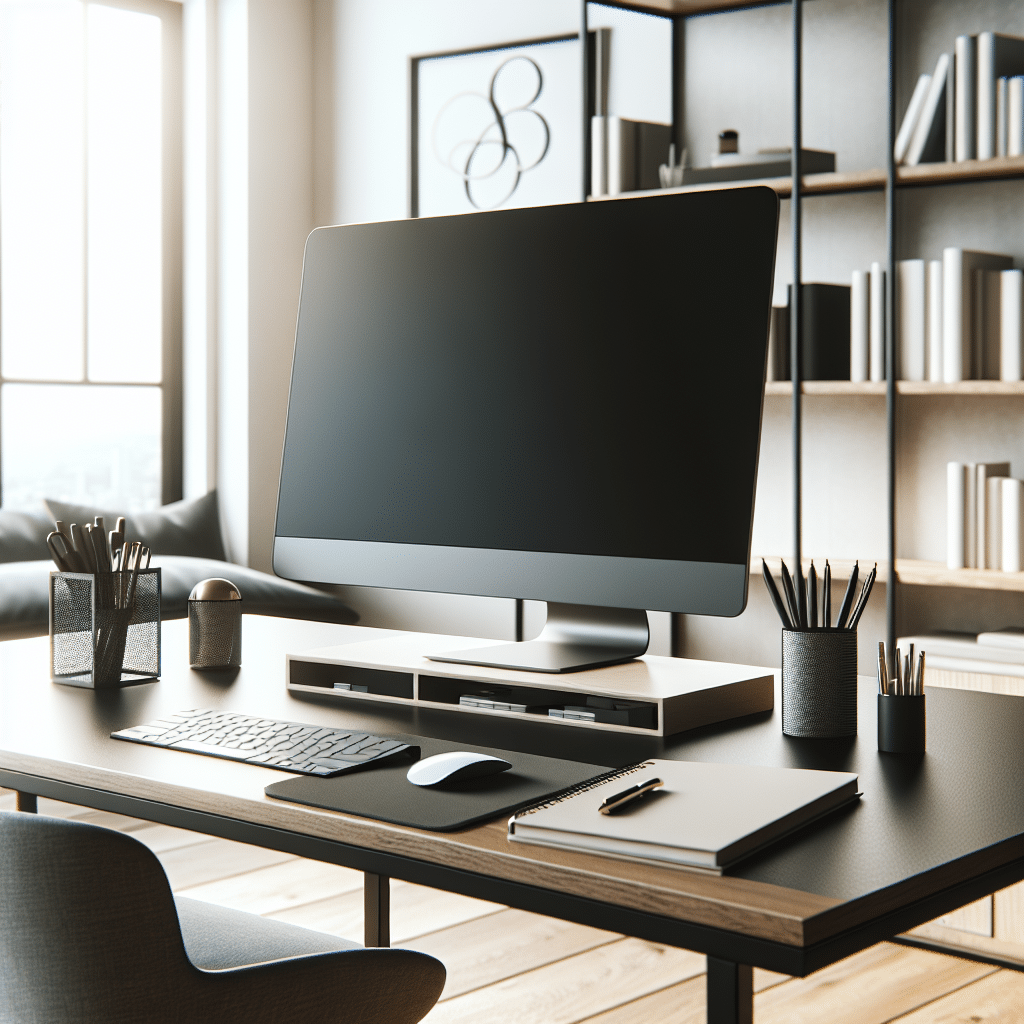Understanding Monitor Risers: Enhancing Your Home Office Setup
In today’s remote work environment, a well-organized home office is more important than ever. One crucial aspect of creating an ergonomic and efficient workspace is the monitor riser. This essential accessory elevates your screen to eye level, reducing neck strain and improving posture. Here’s a closer look at monitor risers, their types, benefits, and tips for choosing the right one for your home office.
What is a Monitor Riser?
A monitor riser, also known as a monitor stand, is a device designed to lift your computer monitor to a more comfortable height. The optimal monitor height is typically at or near eye level when seated. This not only enhances visibility but also prevents common body aches and fatigue associated with poor posture.
Benefits of Using a Monitor Riser
-
Improved Ergonomics: By elevating your monitor, you promote a healthier posture. This position can significantly reduce the risk of musculoskeletal issues over time.
-
Enhanced Comfort: A proper monitor height lessens the strain on your neck, eyes, and back, leading to a more comfortable working experience.
-
Increased Desk Space: Many risers come with additional storage options underneath. This useful feature allows you to clear clutter from your desk and organize essential items neatly.
-
Better Visibility: An elevated screen can help reduce glare from overhead lights or windows, improving your viewing experience and preventing eye strain.
-
Flexibility and Adjustability: Several monitor risers offer adjustable heights or tilting options that allow customization according to individual preferences.
Types of Monitor Risers
Monitor risers come in various types, each designed to meet specific needs and preferences.
1. Static Monitor Risers
These are fixed-height stands that provide a stable base for your monitor. They come in various materials like wood, metal, or plastic. Although they lack adjustability, static risers are usually more affordable and straightforward to use.
2. Adjustable Monitor Risers
Offering a range of height settings, adjustable risers allow users to customize their monitor’s height. This flexibility makes them suitable for multiple users or varying desk setups.
3. Articulating Monitor Arms
For those seeking maximum adjustability, monitor arms mount to the desk or wall and allow for rotation, tilting, and height adjustments. These devices enable users to position their monitors at the perfect angle and distance.
4. Multifunctional Risers
Some risers combine monitor stands with additional features like built-in wire management systems, keyboard trays, or even USB ports. These multifunctional designs streamline your workspace, allowing for greater convenience.
Factors to Consider When Choosing a Monitor Riser
-
Height and Adjustability: Assess your seating position and ensure the riser allows your monitor to reach eye level. If multiple individuals use the workspace, consider an adjustable model.
-
Weight Capacity: Check the weight limit of the riser. Ensure it can safely support your monitor’s weight. Most standard monitors are light enough for most risers, but larger screens may require specific models.
-
Material and Build Quality: Monitor risers are available in various materials, including metal, glass, and wood. Choose a durable material that complements your office aesthetic.
-
Design and Functionality: Look for features like storage options, cable management systems, and added functionality that can enhance your workspace efficiency.
-
Price: Prices for monitor risers can vary significantly. Determine your budget and find a product that balances quality with affordability.
How to Set Up Your Monitor Riser
-
Determine the Right Height: Sit comfortably in your chair and adjust the riser until the top of the screen aligns with your eye level. Your eyes should naturally gaze slightly downwards at the center of the screen.
-
Arrange Your Workspace: Once the monitor is elevated, arrange other elements like your keyboard and mouse. Your hands should rest comfortably at or slightly below elbow height.
-
Minimize Glare: Adjust the monitor’s angle to avoid reflections from windows or overhead lighting. A tilt-able riser can help in optimizing visibility.
-
Cable Management: Use built-in cable management functions or add your own solutions to keep your desk neat. This not only looks better but also improves safety by reducing trip hazards.
-
Personalize Your Space: Don’t forget to add personal touches to your workspace. Whether it’s plants, photos, or motivational quotes, a personalized environment can boost creativity and productivity.
Popular Brands and Models of Monitor Risers
Several popular brands offer a range of monitor risers, catering to different budgets and preferences.
-
Halter: Halter offers a variety of monitor risers, known for their sturdy build and attractive design. Their adjustable models are particularly popular among users.
-
AmazonBasics: For those seeking affordability, AmazonBasics provides reliable, no-frills options that can meet the basic needs of any home office.
-
3M: 3M combines ergonomic design with advanced features. Their monitor arms and multifunctional stands are excellent for users who require maximum flexibility and adjustability.
-
VIVO: VIVO’s products are known for their versatility and ease of use. They offer a range of options, from static risers to full-motion arms.
Maintenance Tips for Monitor Risers
To prolong the life and functionality of your monitor riser:
-
Regularly check for stability. Ensure screws and components remain tightened to prevent wobbling.
-
Clean the riser according to the material. Use appropriate cleaning solutions for wooden stands, and microfiber cloths for glass or metal.
-
Check for wear and tear, especially if the riser is adjustable. Components may loosen over time.
Conclusion
Choosing the right monitor riser can have a significant impact on your overall productivity and comfort in a home office setup. By understanding the benefits, types, and essential features of monitor risers, you can make an informed decision that suits your ergonomic needs, enhances your workspace functionality, and supports your work-life balance as a remote worker.
